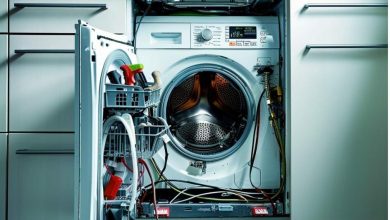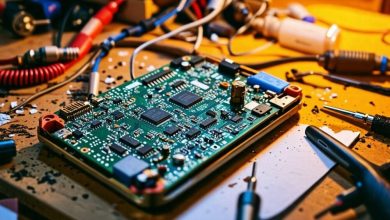10 Easy Steps to Solar Panel Cleaning

In an era where renewable energy sources are more crucial than ever, solar panels stand out as beacons of sustainability and environmental responsibility. Yet, their efficiency hinges on proper maintenance and cleaning. Over time, solar panels can accumulate dust, pollen, leaves, and bird droppings, all of which can significantly reduce their ability to generate electricity. In response to this challenge, we offer a comprehensive guide that outlines 10 easy steps to keep your solar panels clean and efficient.
By adhering to this routine, you can ensure your solar panels perform at their peak, providing you with maximum energy output and contributing to a healthier planet.
- Safety First
The paramount step before undertaking any cleaning task is to ensure your safety and that of your surroundings. Solar panels are often installed in high or hard-to-reach places, making the cleaning process potentially hazardous. It’s essential to wear protective gear, such as gloves and non-slip shoes, to mitigate the risk of accidents.
If your panels are located on your roof, consider employing a safety harness to secure yourself or, if heights are a concern, opt for professional cleaning services. Prioritizing safety not only prevents personal injury but also safeguards your solar panels against accidental damage.
- Choose the Right Time
Identifying the optimal time for solar panel cleaning can significantly enhance the safety and efficacy of the task. It is advisable to clean solar panels during the early morning or late afternoon. These periods offer cooler temperatures and minimal sun exposure, reducing the risk of heat-related discomfort or injury. Additionally, cleaning during these times prevents the quick evaporation of water, allowing for a more thorough cleaning process. This careful timing ensures that you can comfortably and effectively clean the panels, avoiding the midday sun when solar panels can become hot to the touch.
- Gather Your Materials
Before beginning the cleaning process, assembling the right tools is crucial. You will need a soft brush or a non-abrasive sponge to avoid scratching the solar panels, a squeegee for drying, a bucket of soapy water made with mild detergent to loosen dirt, and a garden hose for rinsing.
It’s important to steer clear of abrasive materials and harsh chemicals, as these can damage the protective surface of the panels. For comprehensive advice and professional cleaning solutions, Houston Solar Panel Cleaning offers resources and services to keep your solar panels in pristine condition. Equipped with the right materials, you’re ready to tackle the cleaning process with confidence.
- Rinse Panels with Water:
The initial step in the cleaning process involves rinsing the solar panels with water. This preliminary rinse helps to remove loose dirt, dust, and debris, making the subsequent cleaning steps more effective. By using a garden hose, you can gently cover the panels with water, ensuring that the accumulated grime softens, which minimizes the risk of scratching the panels during the cleaning process. This simple yet critical step prepares the solar panels for a more detailed cleaning, ensuring that the surface is primed for the removal of more stubborn contaminants.
- Gently Scrub the Surface:
Once the solar panels have been pre-rinsed, the next step involves gently scrubbing the surface to remove any remaining dirt. Using the soft brush or non-abrasive sponge you prepared earlier, lightly scrub the panels in a circular motion. This technique helps to loosen and lift grime without damaging the panels. It’s important to clean carefully and patiently, paying close attention to areas with significant dirt accumulation. This meticulous approach ensures that the solar panels are thoroughly cleaned, enhancing their ability to absorb sunlight efficiently.
- Use Soapy Water for Stubborn Grime:
For areas where dirt and grime are more stubborn, applying soapy water can be particularly effective. Gently apply the soapy solution to the affected areas, allowing it to sit for a few minutes. This soaking time helps to break down the grime, making it easier to remove without excessive scrubbing, which could damage the panels. After the soapy water has had time to work on the stubborn spots, proceed with gentle scrubbing to fully remove the residue. This step is crucial for restoring the solar panels’ cleanliness and efficiency, especially in cases where the dirt is resistant to initial cleaning efforts.
- Rinse Again:
After thoroughly scrubbing the panels, it’s essential to rinse them again with clean water. This second rinse ensures that all soap residue, along with the loosened dirt and grime, is completely washed away. Leaving soap on the panels can attract more dirt and may result in a filmy residue that hinders solar absorption.
A thorough rinse with a garden hose ensures that the panels are clean and free of any substances that could affect their performance. This step is vital for maintaining the clarity and effectiveness of the solar panels, allowing them to function at their optimal capacity.
- Dry with a Squeegee:
To prevent water spots from forming and to ensure the panels are completely clear, use a squeegee to remove excess water. Gently glide the squeegee over the surface of the panels, moving from the top down. This action helps to eliminate any remaining water droplets, which can leave marks if allowed to dry naturally.
Using a squeegee not only helps in achieving a spotless finish but also speeds up the drying process, ensuring that the panels are immediately ready to resume their efficient conversion of sunlight into energy.
- Inspect the Panels:
Following the cleaning, take the opportunity to inspect the solar panels closely for any signs of damage or wear. Look for cracks, scratches, or any other issues that could affect the panels’ performance. Regular inspections are an essential part of solar panel maintenance, allowing you to identify and address potential problems before they escalate.
If you discover any damage, it’s advisable to consult with professionals who can assess the severity and recommend appropriate actions. This proactive approach ensures that your solar panels remain in optimal condition, safeguarding your investment and the efficiency of your renewable energy source.
- Schedule Regular Cleanings:
Finally, establishing a regular cleaning schedule is crucial for maintaining the efficiency and longevity of your solar panels. Depending on your geographic location, environmental conditions, and the specific situation of your installation, cleaning frequency can vary. However, as a general guideline, cleaning solar panels every six months is recommended, with more frequent cleanings in areas prone to dust, pollen, or bird activity.
By adhering to a consistent cleaning regimen, you can ensure that your solar panels continue to operate at their highest efficiency, maximizing your energy production and contributing to a sustainable future.
FAQs:
How often should I clean my solar panels?
The frequency of cleaning depends on several factors, including your location, the time of year, and the presence of trees or other sources of debris. Generally, cleaning your solar panels every six months is a good practice, but you may need to clean them more frequently in particularly dusty areas or after major weather events.
Can I use a pressure washer to clean solar panels?
It’s best to avoid using a pressure washer on solar panels. The high pressure can damage the panels’ surface or the seals around them. Instead, use a garden hose and gentle manual scrubbing to safely clean the panels.
Do dirty solar panels really produce less electricity?
Yes, dirt and debris can obstruct sunlight from reaching the solar cells, significantly reducing the panels’ efficiency and the amount of electricity they produce. Regular cleaning ensures that your panels operate at their optimal capacity.
Can cleaning solar panels improve their lifespan?
Regular cleaning not only boosts the efficiency of solar panels but also contributes to their longevity. By removing harmful materials and inspecting the panels for damage, you can prevent long-term issues and ensure that your solar energy system remains effective for years to come.
Conclusion
Maintaining the cleanliness of your solar panels is not just about preserving their appearance; it’s a critical aspect of ensuring their efficiency and longevity. By following these 10 easy steps, you can effectively clean your solar panels, enhancing their performance and maximizing your renewable energy output. Regular maintenance, coupled with a proactive approach to cleaning, will ensure that your investment in solar energy continues to pay dividends in both environmental and economic terms. Remember, when in doubt or faced with challenging cleaning tasks, don’t hesitate to seek out professional services to keep your solar panels in optimal condition.
Read More From Techbullion





